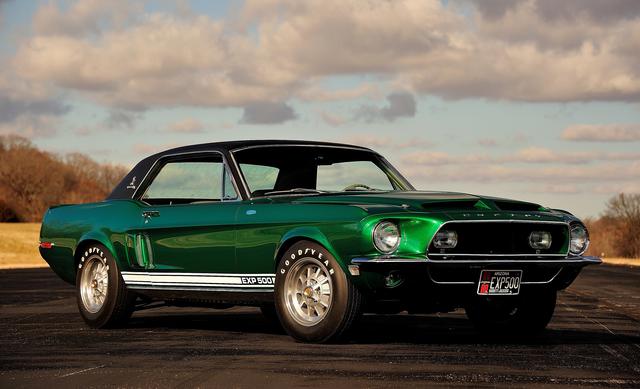Mobile app prevents distractions while driving
Mobile technology has become a new status symbol, and it has reached the level of brilliance and enthusiasm that accompanied the car through the prosperity of the 20th century. Although these two complex technologies share an important social bond, the coexistence of these projects creates an unstable grouping. The large amount of entertainment provided by one and the high-speed movement of the other are now seen as potential causes of the disaster. When drivers are distracted from driving, the popularity of small handheld devices has led to a greater number of vehicle accidents. Although distracted driving may include many non-driving tasks, including eating or even talking with passengers, electronic devices dominate.
The United States National Highway Traffic and Safety Administration (NHTSA) figures for 2009 illustrate a worrisome reality of distracted driving. In total, 5,474 individuals have been killed in car accidents while one driver was distracted. With cell phones being fingered as the chief cause of distraction, for age groups 30-39 years recorded 24 percent are the result of the specific electronic device. For many jurisdictions, laws have come into force recently restricting and even some prohibiting the use of portable devices in efforts to curb the risk of accidents.
Hoping to help establish a somewhat more seamless interaction with drivers, the effort to reconfigure the cockpit to suit high-tech usage has seen a number of solutions. Inventive? Yes! Effective? Well, maybe!
Automakers have been attacking the driver distraction issue for years enabling hands-free and now speech-recognition technology systems into their newest vehicles. Bluetooth, Uconnect and Ford SYNC have risen as potential solutions maximizing a driver’s mobile interactivity behind the wheel well minimizing the factor of distraction. Capable of operating almost any modern cell phone through the vehicle’s on-board technology, most recent systems incorporate text-to-voice technology offering emails to be read out to occupants of the vehicle. Regarding the Ford SYNC technology, the auto company’s zeal to have the system widely available has seen the system installed in roughly 70 percent of current Ford products sold.

Along with factory-equipped units, the smartphone market has also stepped up to offer mobile apps and programs designed to address the driver distraction issue. Offering an app available on Android, Blackberry, Apple and soon Windows smartphones, DriveSafe.ly has been highly successful in the launch of their program. Featured as a free app, DriveSafe.ly reads out text and email messages in real time capable of also distinguishing text shorthand (ie. LOL). With the mobile apps, the option of wisely discontinuing all smartphone interaction is also presented to a driver. On the DriveSafe.ly app, an automatic respond to incoming messages can be programmed for while the driver is behind the wheel. Auto insurance company State Farm offers a free Android-only app that also has the capacity to auto-respond to texts. While taking the phone out of the hands of the driver removes the physical distraction, some argue that hands-free phone or texting continues to supply a diversion from the road.
On March 22nd, major mobile service carrier Sprint introduced their new comprehensive program intended to reduce driver distraction. Developed by Location Labs, Sprint Drive First is a customizable app that has the ability to redirect calls to voicemail and auto-respond to text messages while a vehicle is detected in motion. The service blocks all but three essential numbers and three important mobile apps limiting potentially hazardous use of a device. Drive First is similar to another app called iZup. Unlike the other apps which need to be turn on by the user, iZup and Drive First utilizes the smartphone’s GPS signal to automatically detect when a device is in transit. Sprint will be charging $2 per month to customers using their Drive First application. iZup, costs $2.95 per month but can be purchased on a year-long contract for $19.95 per year. Both software solutions advertise being a tool for parents to teach good driving manners to children. Settings for iZup and Drive First are password protected to prevent tampering.
Promoting the need to keep a driver’s eyes on the road, the latest in anti-detraction technology is only as good as operator. Coinciding with the influx of apps and other hands-free devices, campaigns are active by automakers and mobile companies to educate motorists on the dangers of driving while distracted. Targeting new and younger motorists, the desire for attention will remain on the roadways.
Information source: DriveSafe.ly, Ford Motor Company, iZup, National Highway and Traffic Safety Administration, Sprint Photo source: Ford Motor Company< /p>
-
Latest
 Top 5 European cars we deserve in the U.S.
Top 5 European cars we deserve in the U.S.For many years, the United States has been criticized by European car enthusiasts for its lazy and sedentary driving style. This may be our own fault, because we produced large, magnificent land yacht...
-
Next
 Automoblog Book Garage: Shelby Mustang: A pony cart with all-round performance
Automoblog Book Garage: Shelby Mustang: A pony cart with all-round performanceAuthorColin ComerPublisherMotorbooksISBN978-0760365977Where to ReadAmazonAuthor Colin Comer takes us through the story of the greatest Mustang in history.Our Book Garage series showcases what every en...
Popular Articles
- Car buyers willing to redouble their efforts to buy a car
- Hyundai Canada announces adjustment of its marketing department
- Mercedes-Benz Canada announces comprehensive Mercedes-EQ charging strategy
- GM extends OnStar automotive insights to non-GM
- Kia Canada enhances buyer knowledge at new electric vehicle experience center in Vancouver
- Mitsubishi Motors launches digital showroom
